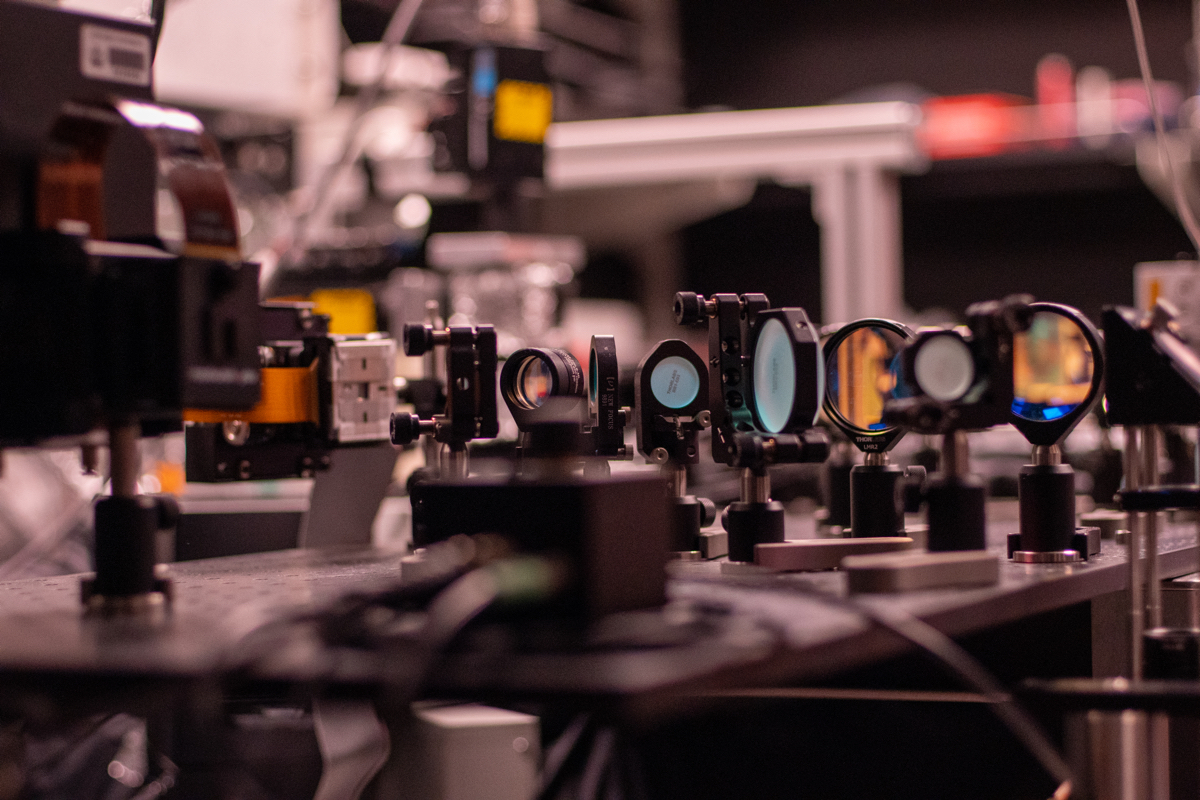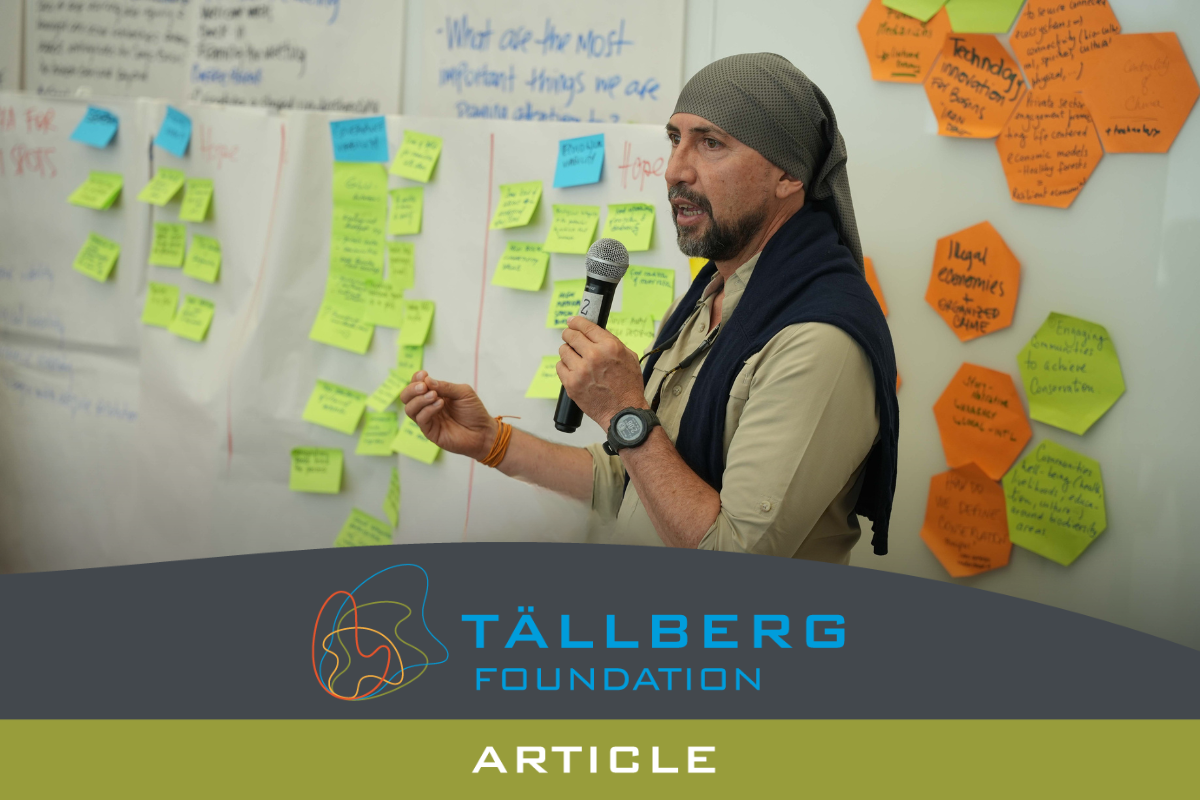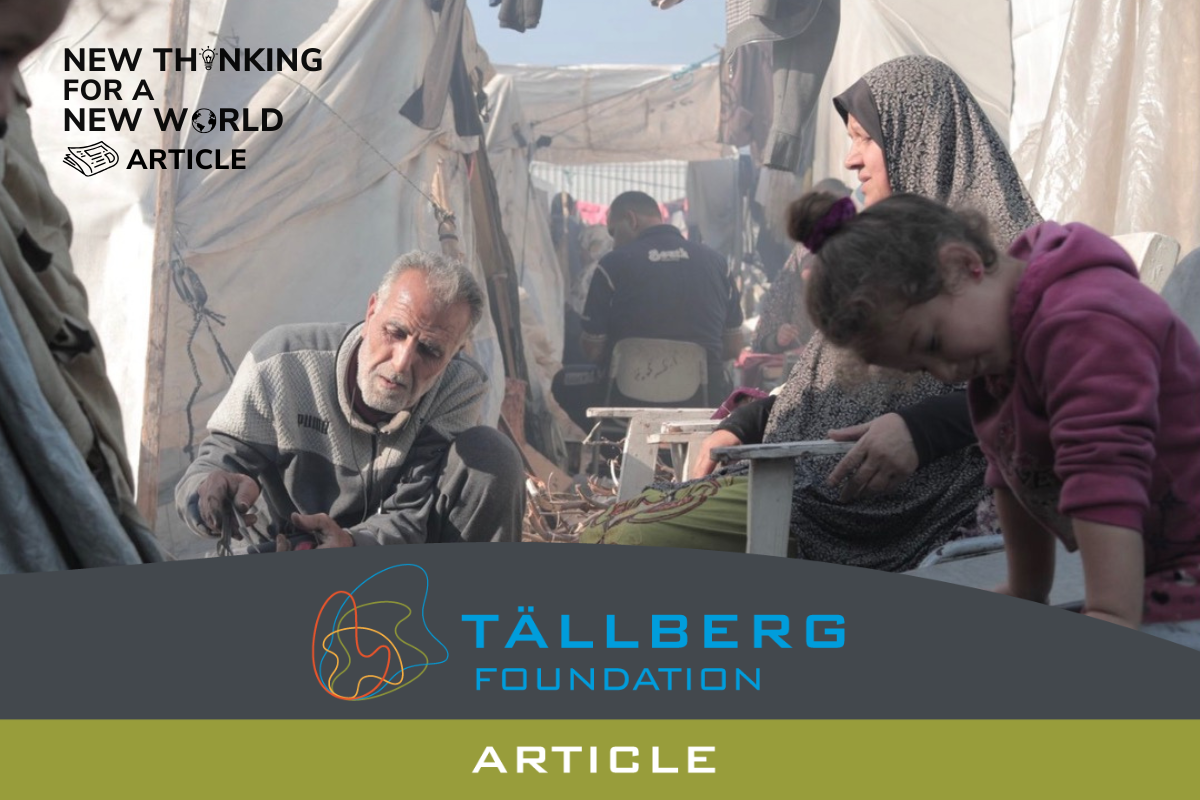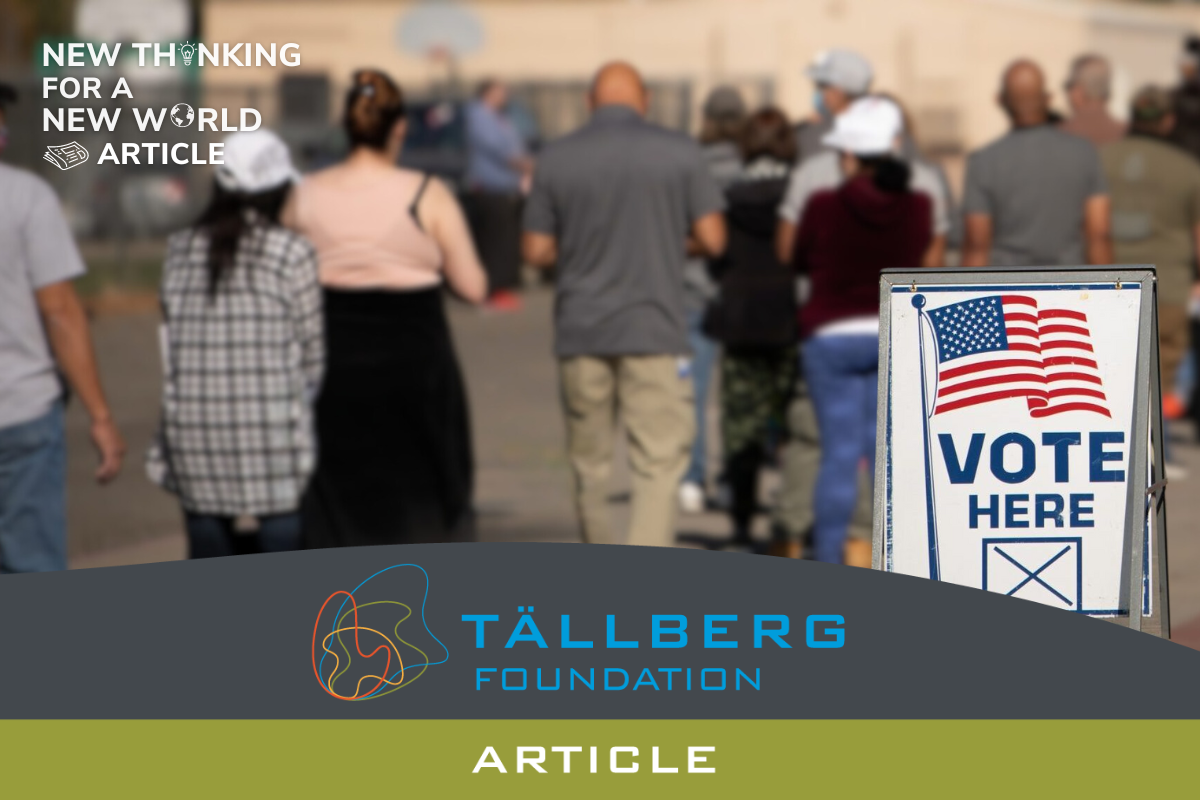On May 6, the Tällberg Foundation co-sponsored a webinar on “Disruptive Technologies: Good, Bad and Ugly” with Kenya’s Strathmore Business School. The conversation among George Njenga, Strathmore’s Executive Dean, and Tällberg/Eliasson Global Leadership Prize winners Anne Goldfeld, Fio Omenetto and Rafa Yuste was moderated by Tällberg’s chairman, Alan Stoga.
A recording of the webinar can be found here: https://youtu.be/4sEXNWfGgNk
AUDIENCE QUESTIONS
Q. For at least a decade we have been saying (a) the pace of technology development is increasing and (b) technology “streams” will interact with each other in ways that can be disruptive. Have we moved forward in finding a methodology for technology impact assessment?
A. I don’t think there’s a universal rule for technology assessment, and we are famously bad at assessing these things (remember the then CEO of Digital Equipment Corporation, saying, “There is no reason for any individual to have a computer at home”). Successful technology weaves itself seamlessly in the fabric of society where it is forgotten. The best approach could be to never assess technology as an individual piece but rather as an interconnection of context, society, and science. The science defines the solution, the context defines the need, and society defines whether the solution is adopted and becomes part and parcel of it. All three are needed for impact.
Fio Omenetto
Q. Scientists and politicians are culturally very different. Do we have a method for bringing science into policy—chief scientific adviser, office of technology assessment, etc.—what is best practice?
A. Unfortunately, “best” practice has not been very effective, at least in most large countries. Part of the problem is the gap between “advice” and “action,” part is the polarization that characterizes politics in too many places, and part is the lack of scientific knowledge of most political leaders. One clear solution would be for more scientists to leave their labs and run for public office.
Fio Omenetto
Q. A lot of this discussion seems to be (indirectly) focused around a root issue of incomplete/inadequate education for the general public. Expertise is, naturally, valuable; however, a populace who is not equipped to deploy the scientific method will be unlikely to embrace the broader developments we need. How do we reimagine our existing systems for raising the valleys (instead of just adding new/taller peaks)?
A. One possible upside of the pandemic-driven lockdown is that more people are going online, not just for entertainment and social media, but for knowledge and even learning; another is that more people are thinking creatively about how to provide online materials in ways that keep audiences engaged for more than the length of a tweet. Maybe this habit will persist—it’s certainly an opportunity for universities, think tanks and others!
Alan Stoga
Q. One of the things that have always defined us as humans is our capacity to invent, tell and pass on common stories. What kinds of stories can we come up with from this catastrophe?
A. So far the stories have fallen into two categories: real life dystopia or health care heroism. What we need storytellers to imagine are stories that help us draw lessons about our collective fragility, and the possibility of a better world based on our collective action.
Alan Stoga
Q. Are poverty and inequality issues interdependent with financing disruptive innovation?
A. Disruptive innovation has the potential to upend widespread inequality by transforming production processes, by reducing the cost and increasing access to basic human goods and services (e.g., medication and health), by inverting the pyramid of hierarchical power, etc. Of course, like everything else, if technological innovation is misused—think about nitrogen allowing the Green Revolution but also the Hiroshima and Nagasaki bombs—it can reinforce the unequal status quo.
Alan Stoga
Q. Which scientific fields will most likely lead disruptive innovation and the 5th or 6th Industrial revolution?
A. Neuroscience, Artificial Intelligence, Synthetic Biology, Nanoscience
Rafa Yuste and Fio Omenetto
Q. Do you think technology in Africa is suitable to everyone as we have countries in Africa where many people, especially children, don’t have access to computers at school. It is really a challenge.
A. I do not think that everyone has access to technology in any of the advanced countries. Yet, they are not afraid to apply it where it will be of great advantage to many. Technology is an enabler and not a right for everyone.
George Njenga
Q. It might be that political leaders are starting to listen to scientists during this pandemic, but we also see scientists silenced by being switched out and, more importantly, many political leaders still contradicting what science says. At the same time, research and development funding is being cut, which means you all are forced to chase funding. Is there a better way? Is there a better mix of public and private funding for R&D? Will the current race for a vaccine produce collaboration that might spill over to other areas?
A. Funding new technologies is always a dance among needs, public and private interests, regulation, independent action, collaboration and time horizons. The current search both for medicines and vaccines to treat or cure Covid-19 will inevitably combine all those elements. But different societies will answer the questions differently. However, you are 100% correct that researchers and other innovators would much rather be researching and innovating than chasing funding. But is there an ideal solution?
Alan Stoga and Fio Omenetto
Q. What message do you have for the youth?
A. We live in a scary world. The pandemic, as bad as it is or might become, is a wake up call for the profound need for fact-based collective and coordinated action aimed at producing better outcomes for humanity. That won’t happen unless young people both advocate for and participate in making it happen.
Alan Stoga
Q. How are we going to tackle the global crisis? How are we going to track the crisis?
A. Unfortunately, too many countries having been responding as though this is a “national” crisis. The lack of collaboration or coordination at the regional and global levels; the imposition of export controls on medical equipment and food; the lack of transparency and failure to share quality information have demonstrated both the weakness of the global institutional framework and of many political leaders.
So, the de facto answer to how are we going to tackle the global crisis seems to be to pretend that it is not one.
Alan Stoga
Q. If interdependence is in retreat, then how can we get to a post-1945 with new institutions?
A. It took two devastating global wars and a depression to produce the post-1945 architecture. Let’s hope that we do not need such catastrophic destruction to create the kinds of new institutions and processes that are so evidently needed now.
Alan Stoga
Q. Creation of the declaration of human rights followed two world wars. In your opinion, do you foresee that the COVID19 pandemic could be a beginning for a creation of a global Internet regulation/governance, or might humanity need a connectivity catastrophe for a creation of a global Internet regulation?
A. This is exactly the type of idea that we need to promote. The Internet is too important to be left in private hands.
Rafa Yuste
Q. Do you believe that a neurorights declaration will be approved and accepted by the international community in the near future?
A. Yes, we are working towards that goal in different countries and with international organizations, but need citizens everywhere to help make this happen.
Rafa Yuste
Q. How can we address the problem of interconnectivity and poor quality education especially in the far-flung areas where access to reliable Internet service is scarce?
A. If we are optimistic, the shock of a more or less global lockdown could lead to a dramatic reduction in the cost of electricity (through aggressive commitment to cheap renewable energy, especially in countries that want to become less dependent on global supplies) that is key to universal connectivity. Moreover, as health and education providers are forced to go online, they are learning how to produce high quality content, services and systems. In combination, this could be an unintended, positive consequence of the pandemic—IF there is leadership.
Alan Stoga
Q. Core-values education, as well as life and social skills for youth and adults will make a big difference in the world, if important role models make it their purpose. Can the Tällberg Foundation help provide leadership to make this happen?
A. Tällberg Foundation’s commitment to seek for “New Thinking for a New World” is rooted in the belief that collectively we have the possibility as well as the obligation to manage the profound changes that are reshaping the world. That requires ideas and actions, but also leadership and partners. We are all in this together, or we all will fail.
Alan Stoga
Q. This pandemic has had a huge negative effect not only on my country, but on all countries. Businesses collapse, stores are closed, many people are jobless and they are forced to be at home to be safe from Covid-19. How can technology help us to survive economically?
A. Technology will help us educate, advance e-commerce, engage more in telemedicine, re-organize entertainment and restaurants, produce more efficiently, work at home, have flexible workplace models, Re-skill labor, enjoy home schooling, and so on. Covid-19 is an opportunity to assess new economic models.
George Njenga
Q. With disruptive technologies we tend to think of high tech solutions but I think that, in order not to leave out the poorest of the poor, it should be a combination of locally improved existing technologies combined with some understandable and by the people controllable high tech.
A. The bottom line is that deployment of ‘high tech disruptive’ solutions such as new diagnostic, therapeutic, or vaccine platforms gain immeasurably from working in partnership with people who understand conditions in resource limited settings. Disruptive approaches to delivery of care in local environments such as use of cell phones and community based approaches are essential to the optimization of any new approaches for diagnosis/vaccination/treatment for diseases that impact these environments.
Anne Goldfeld
Q. What are some of the steps we need to take to help people in Africa accept innovation?
A. Modeling innovation in Africa means understanding Africa’s economy, vast as it is, and creating value “one-step-higher”. For example, lack of banking services has forced many countries to adopt mobile money and uber and online house rental services. But, large agricultural equipment is a failure because most farms are small scale. Probably, scaling the machines to the size of smaller agricultural land sizes may help.
George Njenga
Q. There is moral practice based on moral competence. How can we improve that moral competence in a short time? And then will the moral practice naturally follow? That relates to the discussion on Humanism and Renaissance and also on the neurorights and, maybe, neuro capabilities.
A. That is a complicated question. Each of us has our own set of moral values. My intuition is that a better knowledge of how our minds work will enable a morality that will be anchored in rationality and based on universal criteria of justice. I am Kantian in this sense.
Rafa Yuste
Q. My question to Rafael is how to overcome the technology crisis in developing countries.
A. Maybe we can use the Internet intelligently to make a level playing field in science and technology and incorporate developing countries into the forefront. In other words, I think we need to dissolve national boundaries with respect to science and technology.
Rafa Yuste
Q. Innovations in technology can be good, bad or ugly. As an African, I ask myself what the balance could be. What prevents good technology from being used badly? Think about guns, which are needed for protection. But many Africans live in dictatorships with very little democracy, in part because guns are abused by the dictators. What is the solution to this for the African continent?
A. As you say, technology is not inherently good or evil, but technologists and politicians might be. There are probably some technologies so dangerous that they should be outlawed or, at least severely limited and humanity has occasionally demonstrated the capacity to do that. However, it is a fair question to ask whether the current global institutional framework can keep up with the explosion of new disruptive technologies. If not, then we urgently need something better, not just for Africa, but for humanity.
Alan Stoga
Q. There is a big gap in terms of R&D, technology and innovation between the highly developed countries and the least developed countries. What kind of global policy can you recommend in order to address this gap?
A. That gap will always exist; indeed, it exists within and among highly developed countries. The challenge to countries that generate new technologies is to maximize the pace of technological change; the challenge to countries who need access to technologies generated by others is to leverage whatever new technology they obtain to its fullest and in ways that are best for their citizens. There is no global authority to close the gap, so individual countries must adopt policies that encourage innovation, education, entrepreneurship, fact-based decision making and trust. Poor countries are not condemned to poor governments; their people must demand better.
Alan Stoga
Q. I would like to ask the panelists, who created the Corona Virus as a biological weapon to destroy the human beings and why the creators are willing to spread the COVID-19 towards some specific areas?
A. The overwhelming evidence is that the coronavirus that causes Covid 19 occurred naturally in a bat and, like other coronaviruses and other pathogens, infected humans after transmission through other animals. Put it the other way: there is no credible evidence that humans created and weaponized the virus.
Alan Stoga





0 Comments